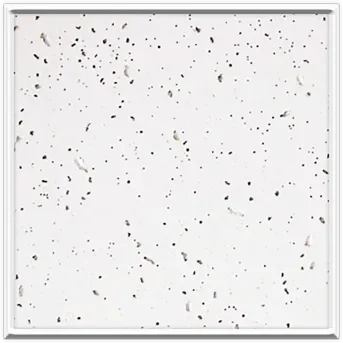- Afrikaans
- Albanian
- Amharic
- Arabic
- Armenian
- Azerbaijani
- Basque
- Belarusian
- Bengali
- Bosnian
- Bulgarian
- Catalan
- Cebuano
- Corsican
- Croatian
- Czech
- Danish
- Dutch
- English
- Esperanto
- Estonian
- French
- German
- Greek
- Hindi
- Indonesian
- irish
- Italian
- Japanese
- Korean
- Lao
- Malay
- Myanmar
- Norwegian
- Norwegian
- Polish
- Portuguese
- Romanian
- Russian
- Serbian
- Spanish
- Swedish
- Thai
- Turkish
- Ukrainian
- Uzbek
- Vietnamese
Лис . 15, 2024 19:41 Back to list
what is ceiling grid made of
What is Ceiling Grid Made Of?
When designing or renovating a space, one often overlooks the intricate details of the ceiling. However, ceiling grids are essential elements that not only enhance the aesthetic appeal of a room but also contribute to its functionality. Understanding what ceiling grids are made of is crucial for anyone involved in construction, interior design, or architecture.
A ceiling grid is a suspended framework installed overhead, designed to hold ceiling tiles, panels, or other types of ceiling materials. The most common materials used to construct ceiling grids include metal, wood, and sometimes plastic composites.
Metal Grids
The prevailing choice for ceiling grids is metal, specifically aluminum or galvanized steel. These materials are popular due to their durability, resistance to corrosion, and ease of installation. Metal grids can withstand significant weight, making them ideal for holding acoustic tiles, lighting fixtures, and HVAC components. They also offer a clean, modern look, which can complement various design styles. Furthermore, metal grids are often lightweight, ensuring they do not add excessive load to the building's structure.
Wood Grids
what is ceiling grid made of

For those seeking a warmer, more natural aesthetic, wooden ceiling grids are a compelling option. These grids can be made from a variety of woods, including oak, maple, and pine. Wooden grids provide a rustic charm and are particularly favored in residential settings or in spaces seeking to create an inviting ambiance. However, wood grids may require more maintenance than their metal counterparts and are not as fire-resistant. It's crucial to treat wooden grids appropriately to prevent issues such as warping or insect damage.
Plastic Composites
In some cases, plastic composites or vinyl materials are utilized for ceiling grids. These grids are lightweight and resistant to moisture, making them suitable for environments with high humidity, such as bathrooms or kitchens. Plastic grids can also provide a cost-effective solution for projects with budget constraints. However, they may not offer the same level of durability or aesthetic options as metal or wood grids.
Conclusion
In summary, ceiling grids are primarily made from metal, wood, or plastic composites. Each material offers unique advantages and can significantly impact the overall design and function of a space. When choosing a ceiling grid, consider factors such as durability, aesthetics, and the specific environment where it will be installed. By understanding the materials used in ceiling grids, you can make informed decisions that enhance both the beauty and practicality of your living or working spaces.
-
Transform Interiors with PVC Gypsum Ceiling: A Stylish, Durable, and Moisture-Resistant SolutionNewsMay.19,2025
-
The Smart Interior Upgrade: Discover the Durability and Versatility of Gypsum Ceiling Access Panel SolutionsNewsMay.19,2025
-
The Smart Choice for Interior Design: Discover the Value of PVC Gypsum Ceiling SolutionsNewsMay.19,2025
-
Mineral Fiber Ceiling Tiles: The Smart Blend of Performance and AestheticsNewsMay.19,2025
-
Mineral Fiber Ceiling Tiles: The Superior Choice Over Gypsum for Sound and Fire SafetyNewsMay.19,2025
-
Mineral Fiber Ceiling Tiles: Eco-Friendly Strength and Style for Every CeilingNewsMay.19,2025







